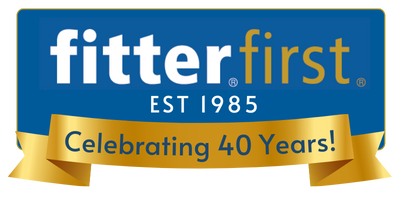⭐ Trusted by top athletes from LIV Golf, NBA, CFL, NFL & Alpine Canada ⭐
⭐ Trusted by top athletes from LIV Golf, NBA, CFL, NFL & Alpine Canada ⭐
Shop
Revitalize Your Post-Ski Recovery: Massage, Soft Tools, and Stretches for Enhanced Performance on the Slopes
December 15, 2023 4 min read

So you did your pre-season conditioning with Pro Fitter and had an amazing day on the slopes! But that incredible day also left you feeling a bit sore and achy. Fret not, we’ve got some tips to help!
Skiing is a winter pursuit that brings joy and excitement to many during the winter months. The physical demands of this physically demanding activity can leave your muscles fatigued and your body in need of recovery. We will dig deeper into ways you can partake in post-skiing recovery to help you get back on the slopes sooner with fewer aches and pains. We will explore the benefits of massage, the different soft massage tools you can use, and a quick overview of what stretches are to help you unwind and rejuvenate after a day on the slopes.
Before we dive in, two things to keep in mind that will help with your recovery are to stay hydrated during the day. When it is cold, it takes longer for the onset of sweating to begin than it does in the warmer seasons (Torii & Nakayama, 1993). However, there are no significant differences in sweating patterns between summer and winter once an individual has begun to sweat (Torii & Nakayama, 1993). As such, it is important to hydrate properly with water and potentially electrolytes when spending the day skiing.

A second consideration to keep in mind is warming up prior to skiing. Studies show that an active warm-up appears to help with temperature perception. There is some evidence to suggest that it may also help with athletic performance in Alpine skiing (McGawley, Spencer, Olofsson, & Andersson, 2021). An active warm-up may consist of bike sprints, active stretching, or any activity that increases body temperature above baseline. A sufficient warm-up may help prevent injury while skiing (Racinais, Cocking, & Périard, 2017). Here are some ideas or activities that can help with recovering after skiing.

Massage therapy has been a time-honoured method for alleviating muscle tension and promoting relaxation. After a day of challenging ski adventures, treating yourself to a massage can significantly enhance your recovery process.
- Professional Massage: A session with a licensed massage therapist can target specific muscle groups affected by skiing. Techniques such as Swedish massage, deep tissue massage, and sports massage can aid in reducing muscle soreness and promoting a quicker recovery.
- Self-Massage with Soft Tools: For a more accessible approach, consider investing in soft massage tools like foam rollers, Acuback, Tiger tail, the Rolflex, spike balls, or massage balls. Using these tools for self-massage helps break down knots, improve flexibility, and expedite the recovery process. Roll over your muscles, paying special attention to areas such as the calves, thighs, and lower back.

Harnessing the Benefits of Soft Massage Tools:
In addition to traditional massage methods, incorporating soft massage tools into your recovery routine can provide targeted relief and aid in overall muscle recovery. These tools vary in size; some are portable, while others are best used in a home setting.
- Foam Rollers: These versatile tools can come in different densities, sizes, and lengths. Functional and effective, foam rollers can be used to release tension in various muscle groups. Roll over the length of your muscles to help break down knots and improve flexibility. Target areas such as the calves, quadriceps, and hamstrings.
- Massage Balls: Are lightweight and portable. They are great for targeted relief of specific trigger points; massage balls are invaluable. Apply pressure to tight spots, promoting muscle relaxation and increased blood flow. They are particularly effective for reaching areas that may be challenging with a foam roller. Some come with a textured surface, including spikes. These can be very effective when massaging the bottom of the feet and releasing myofascia.
The Role of Stretching in Recovery:
Stretching is a fundamental aspect of post-skiing recovery, aiding in improving flexibility, reducing muscle stiffness, and preventing injuries. A well-rounded stretching routine should encompass both dynamic and static stretches.
- Dynamic Stretches: It's ideal to incorporate dynamic stretches into your warm up, including leg swings, walking lunges, and arm circles. These movements help warm up your muscles, prepare your body for intense activities, including skiing, and help you avoid injury.
- Static Stretches: After you have finished with your skiing session, it is a great idea to partake in static stretches focusing on major muscle groups—quadriceps, hamstrings, calves, and lower back. Performing 2-3 sets, hold each stretch for 45–60 seconds to allow your muscles to relax and lengthen.

Recovering from a day of skiing is paramount to ensuring that your body remains resilient and ready for adventures on the slopes. By incorporating massage, soft massage tools, and stretching into your post-skiing routine, you can expedite recovery, reduce muscle soreness, and enhance your overall sense of well-being. Take the time to care for your body, and you'll find yourself eagerly anticipating the next day of exhilarating skiing experiences with renewed energy and vitality.
References
McGawley, K., Spencer, M., Olofsson, A., & Andersson, E. P. (2021). Comparing Active, Passive, and Combined Warm-Ups Among Junior Alpine Skiers in −7°C. International Journal of Sports Physiology and Performance, 16(8), 1140–1147. https://doi.org/10.1123/ijspp.2020-0300
Racinais, S., Cocking, S., & Périard, J. D. (2017). Sports and environmental temperature: From warming-up to heating-up. Temperature, 4(3), 227–257. https://doi.org/10.1080/23328940.2017.1356427
Torii, & Nakayama. (1993). Disappearance of seasonal variation of sweating responses in exercise man: effect of pre-heating in cold season. Center for Academic Publications Japan, 22, 11–20. Retrieved from https://www.jstage.jst.go.jp/article/jhe1972/22/1/22_1_11/_pdf
Subscribe
Sign up to get the latest on sales, new releases and more …
